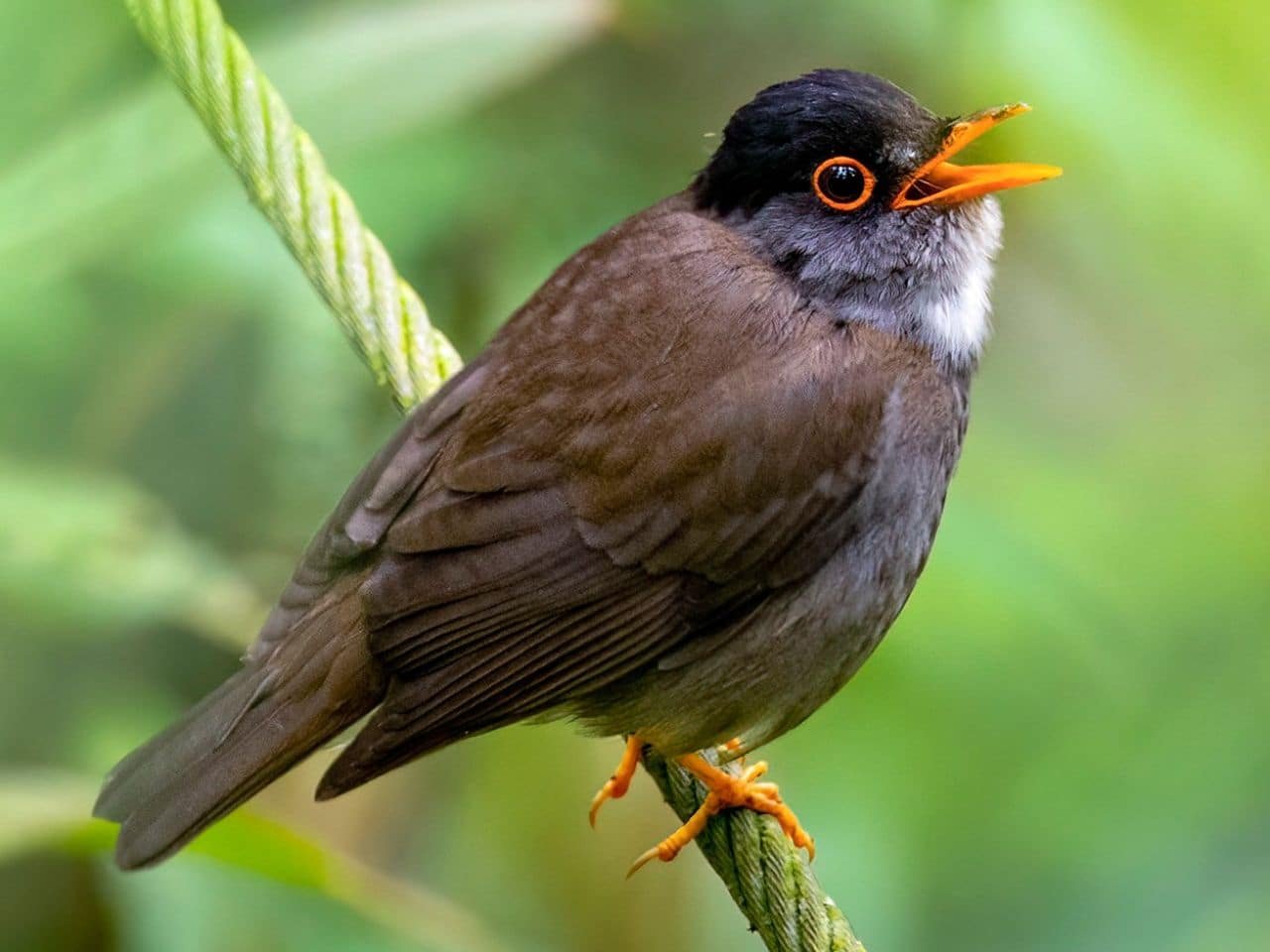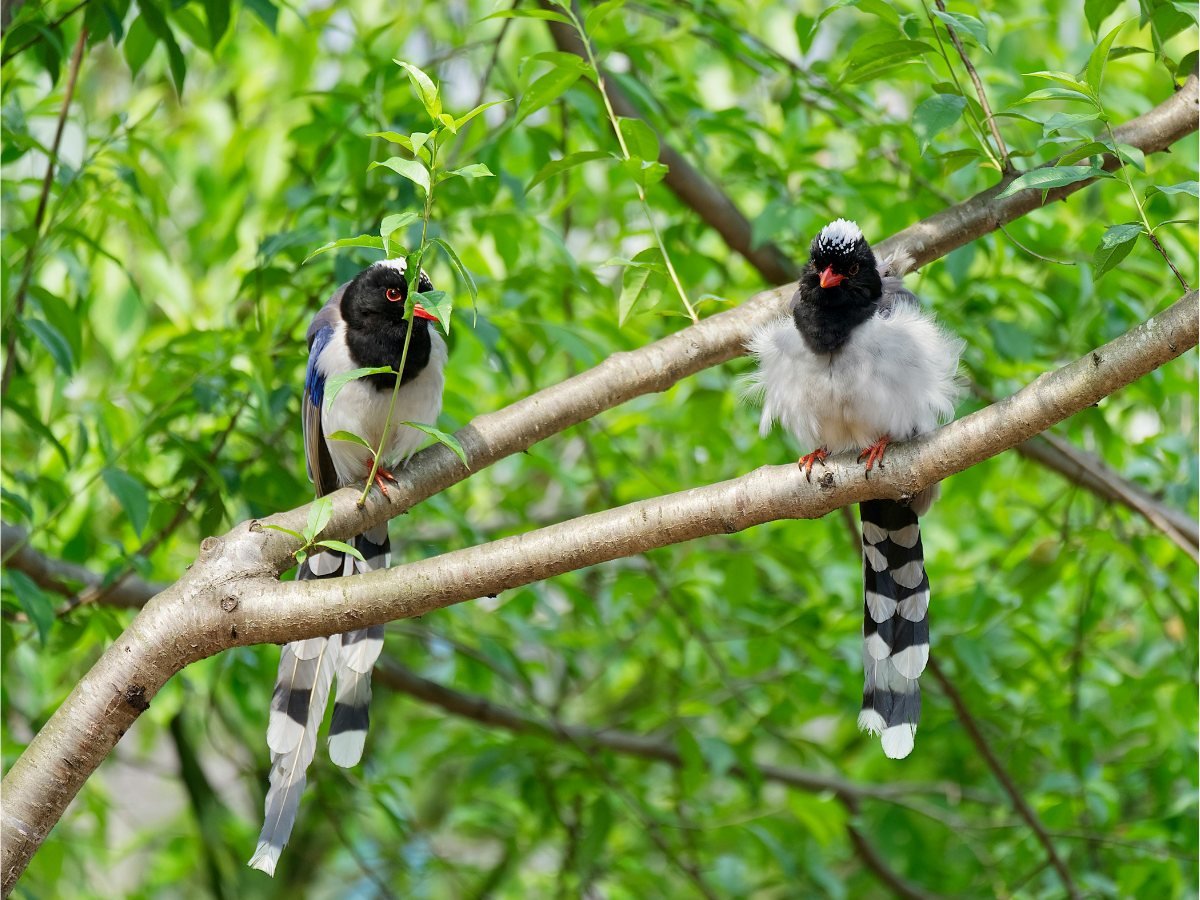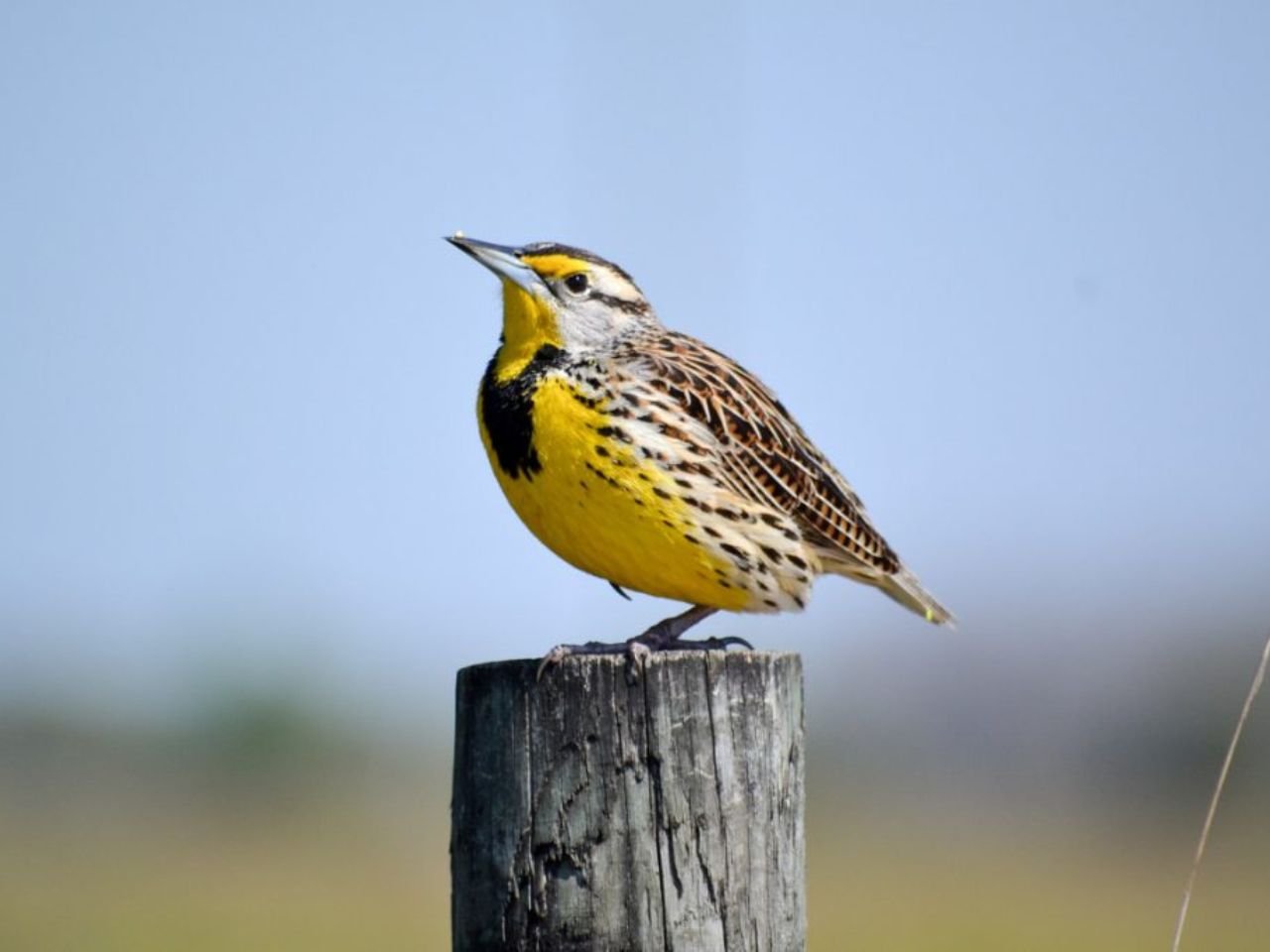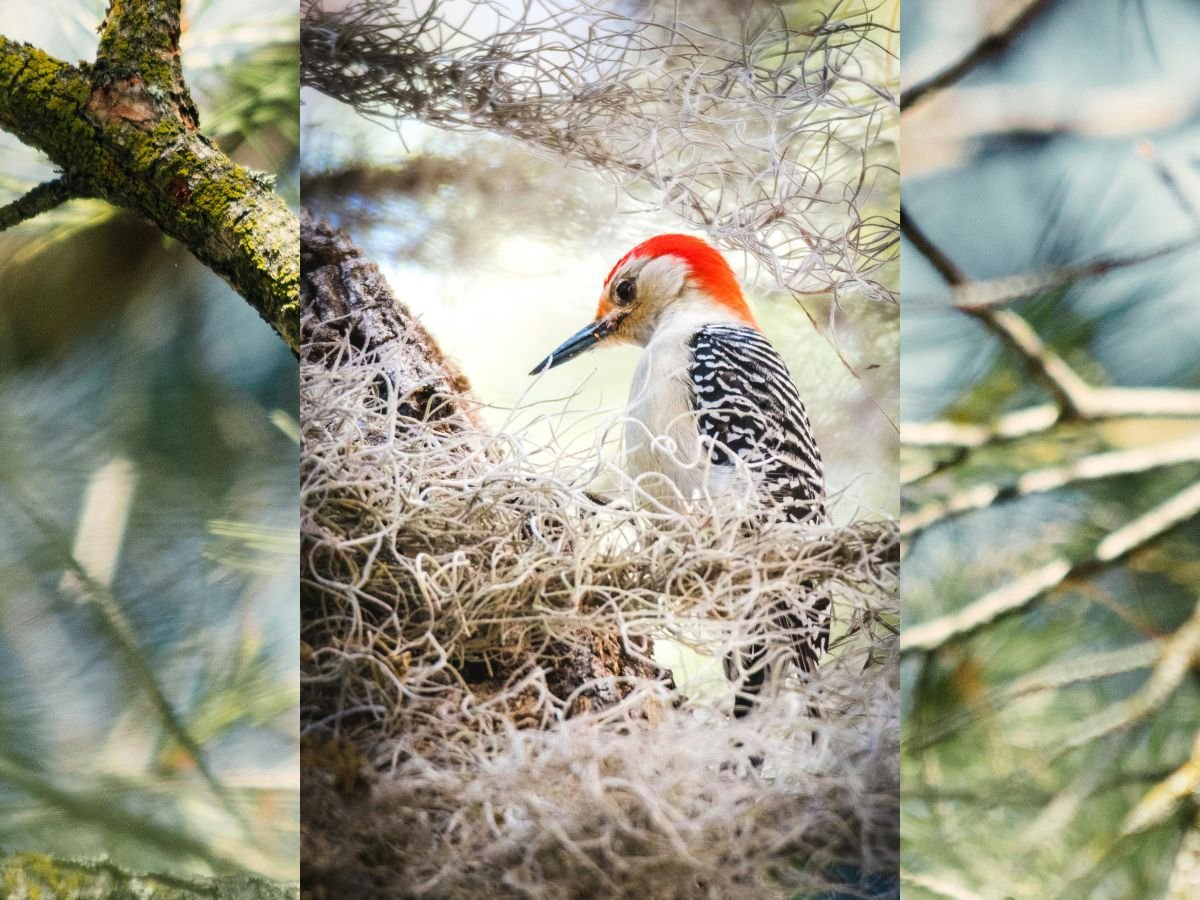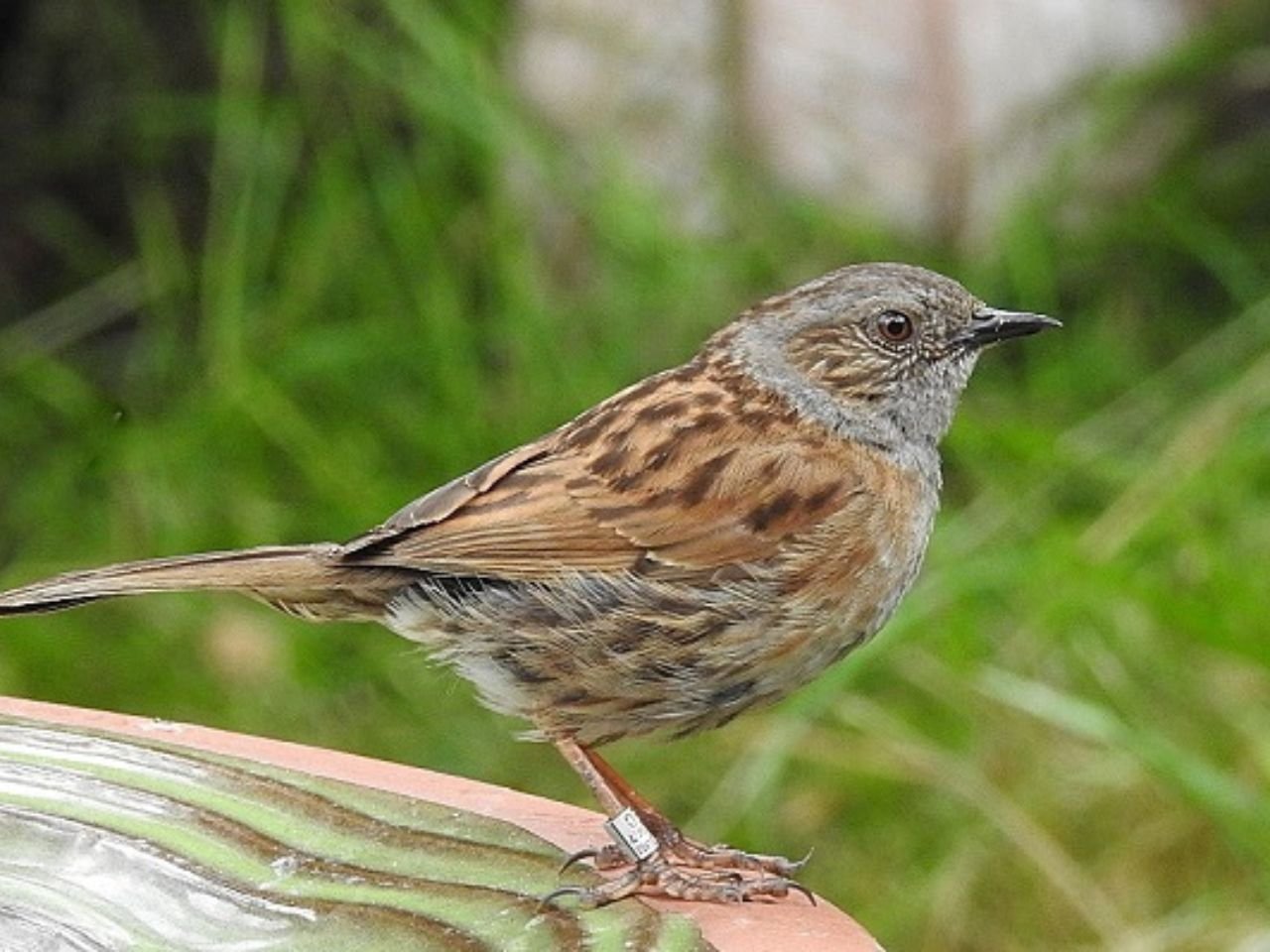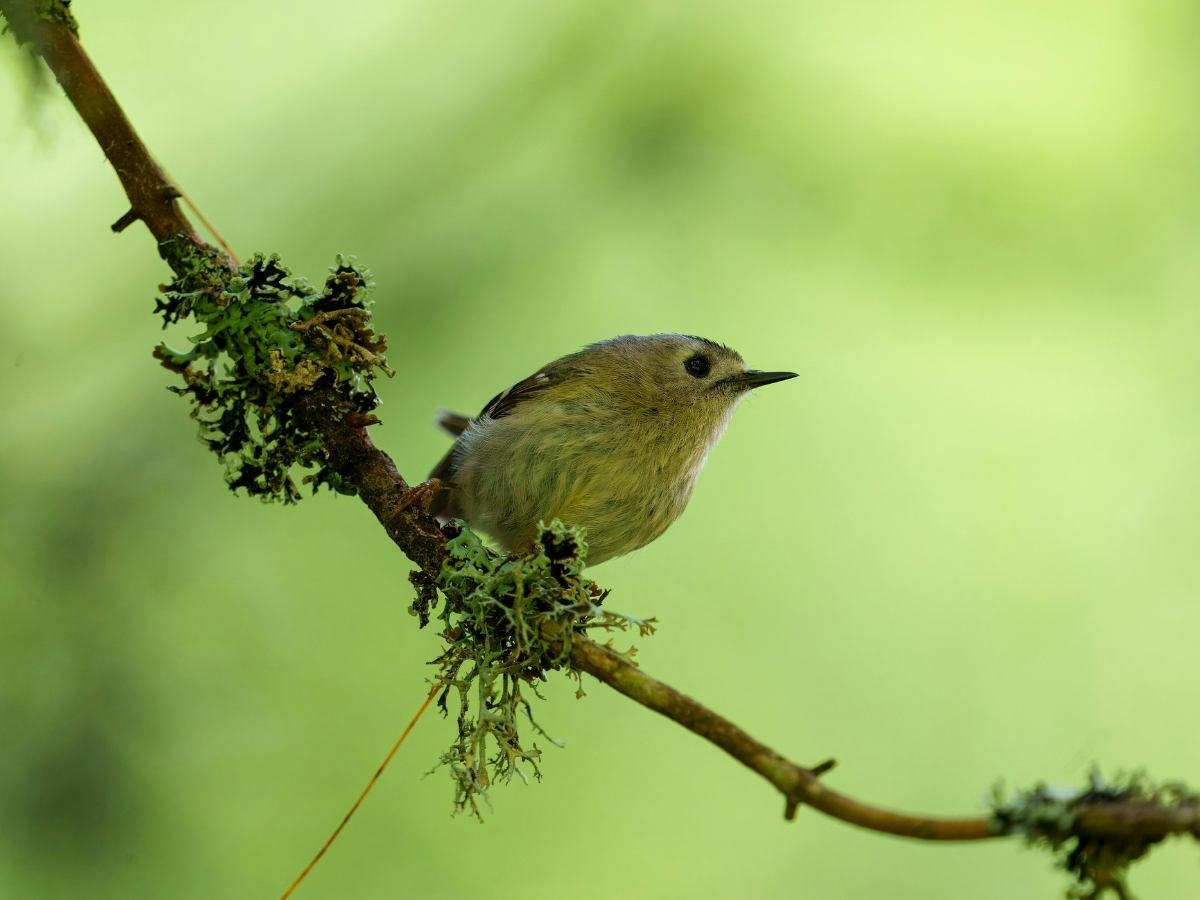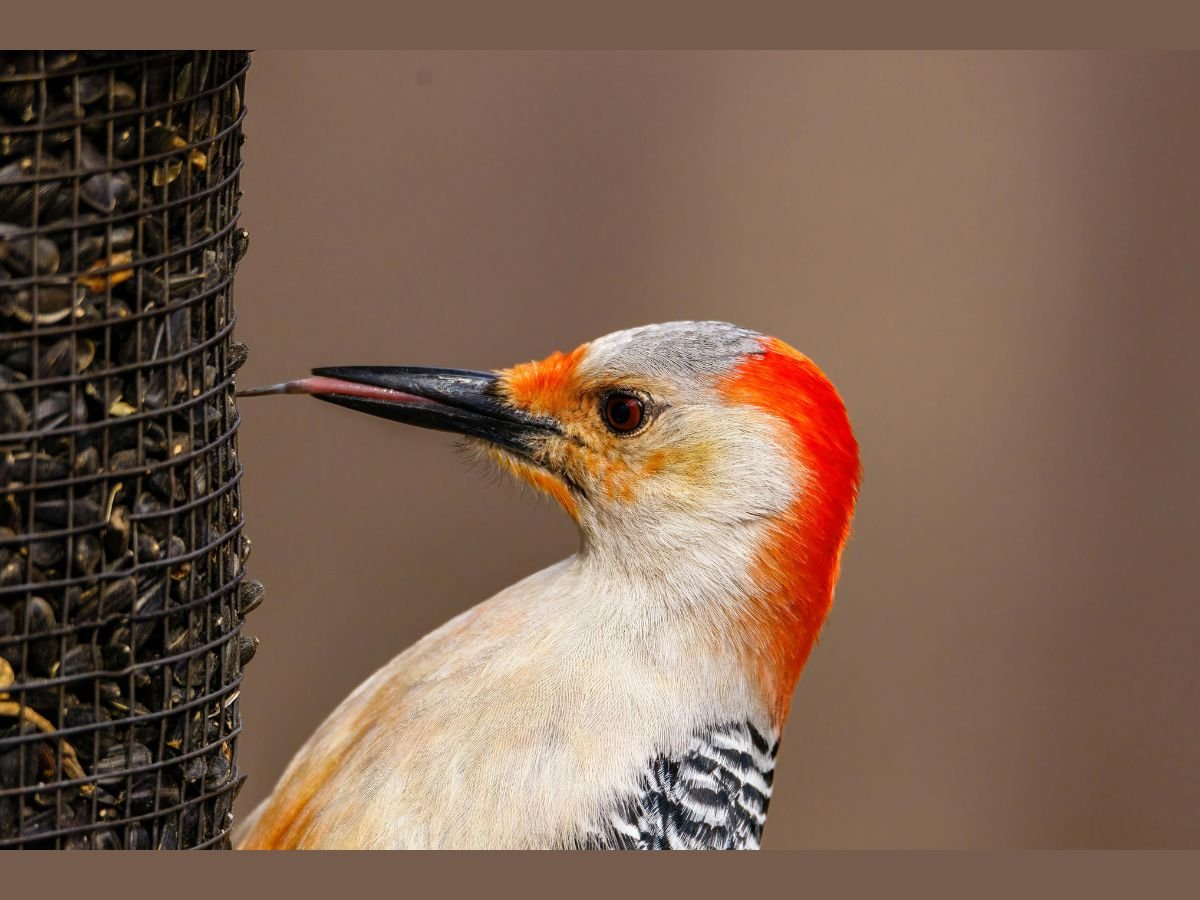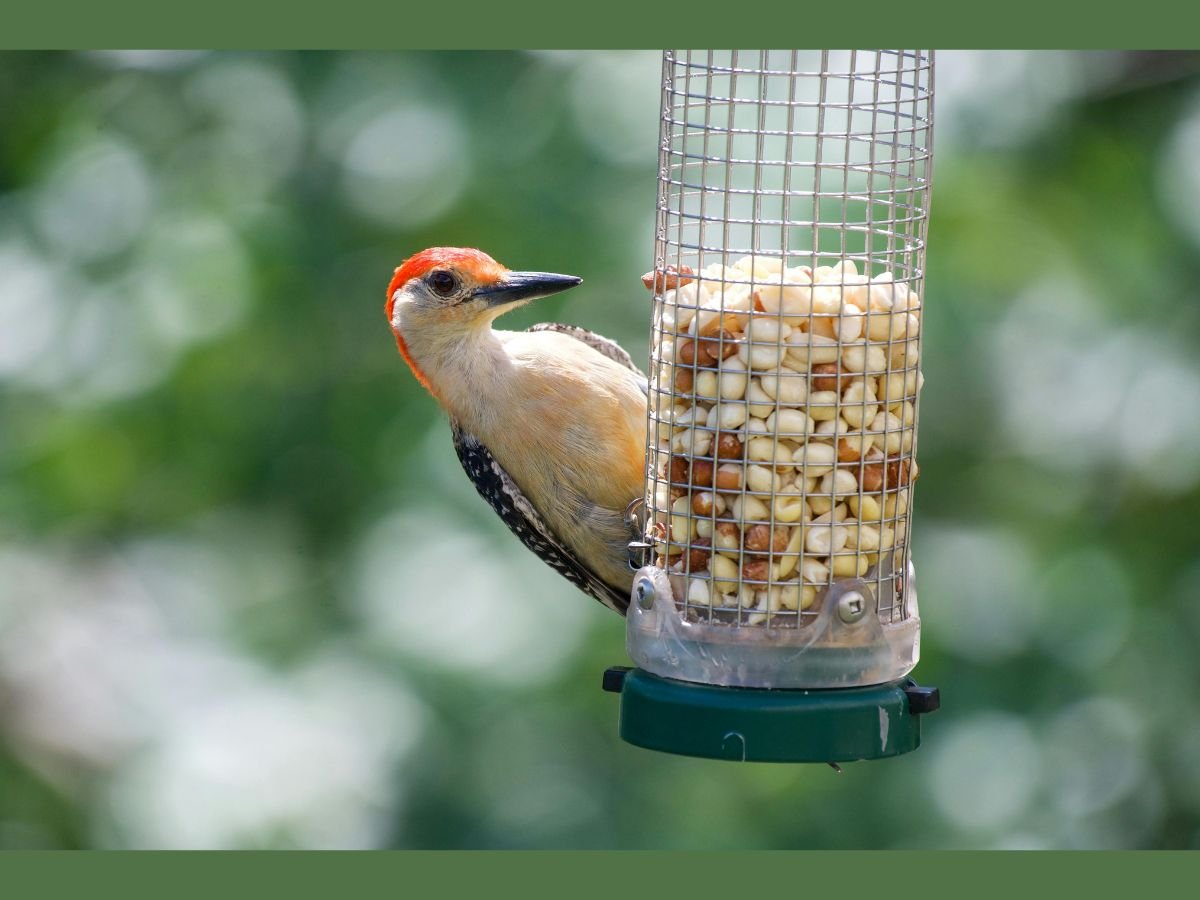The Black-Headed Nightingale-Thrush is a small, colorful bird found in Central America. It is known for its melodious song.
The Black-Headed Nightingale-Thrush (Catharus mexicanus) is a captivating bird species commonly found in the dense forests of Central America, especially in countries like Mexico and Guatemala. This bird is easily recognizable by its black head, contrasting with its olive-brown back and wings.
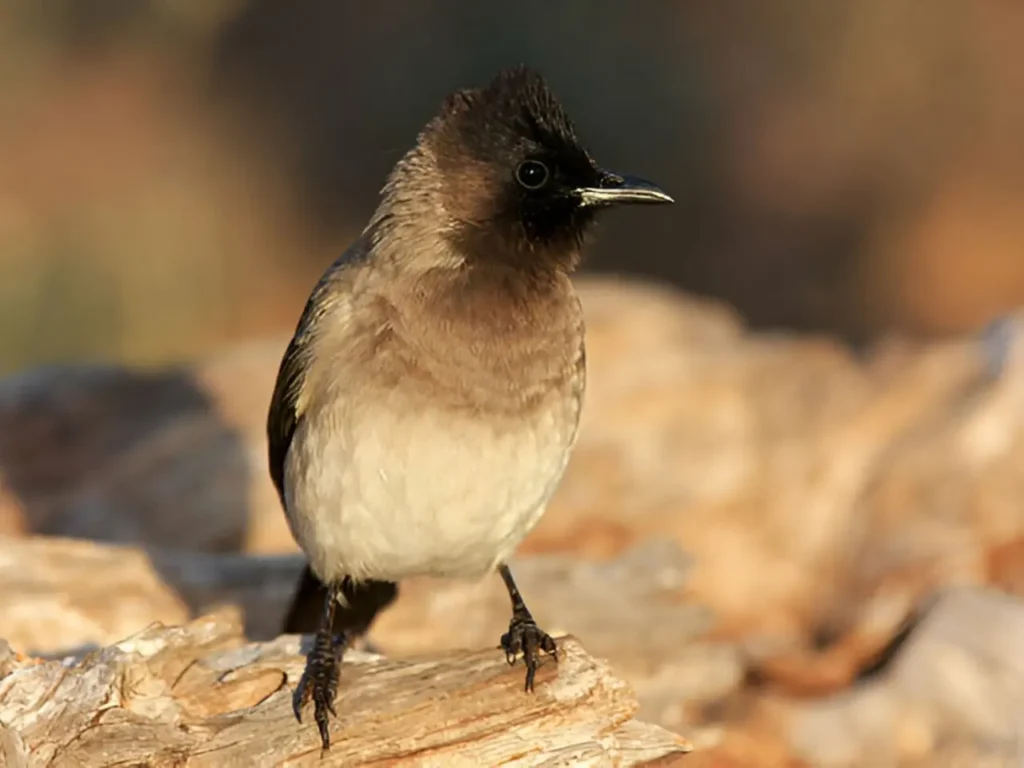
It measures about 16 cm long and has a sweet, melodious song that enchants bird watchers and nature lovers alike. Its diet primarily consists of insects, fruits, and berries, making it an essential part of its ecosystem. Conservationists are keen on preserving its habitat due to its declining population caused by deforestation. Observing this bird in its natural habitat is a delightful experience for bird enthusiasts.
Physical Characteristics
The Black-Headed Nightingale Thrush Bird is beautiful and unique. It is known for its striking appearance and melodious song. This bird is native to various regions in Central and South America. Understanding its physical characteristics can help bird watchers and enthusiasts identify this species more easily.
Coloration And Markings
The Black-Headed Nightingale-Thrush Bird has a distinct coloration that makes it easy to spot. Its head is a deep black, which contrasts sharply with its lighter body. The bird’s back and wings are typically grayish-brown, while its underparts are a soft, pale gray.
Some key features include:
- Black head with a distinctive color
- A bright orange bill that stands out
- White eye-ring that adds to its unique look
These birds also have dark legs and feet, adding to their beauty. The contrast between their dark head and lighter body makes them a joy to watch in the wild.
Size And Shape
The Black-Headed Nightingale-Thrush Bird is small but has a well-proportioned body. Its average size ranges between 16 to 18 centimeters in length. Despite its small size, the bird has a strong and agile frame.
Here are some notable aspects of its size and shape:
- Length: About 16-18 cm
- Wingspan: Approximately 25-30 cm
- Weight: Around 30-40 grams
The bird’s shape is streamlined, which aids in its swift flight. Its wings are rounded, and its tail is relatively short. These features help the bird maneuver through dense forests and underbrush with ease.
Behavior
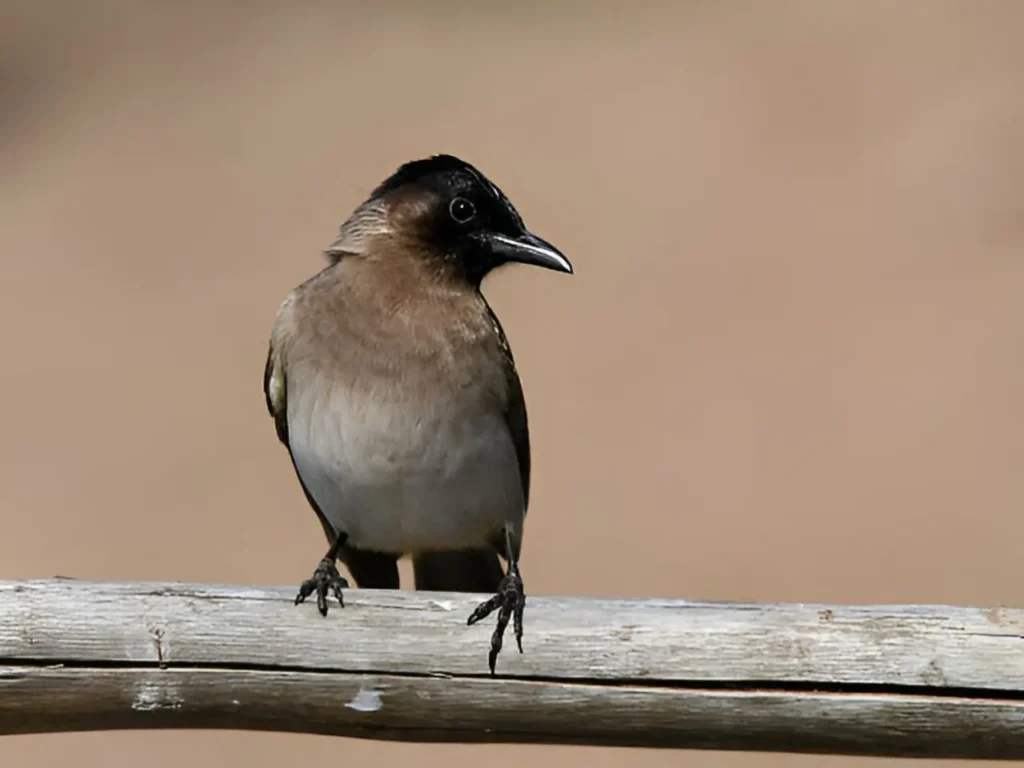
The Black-Headed Nightingale-Thrush Bird is a small, charming bird known for its beautiful song and striking appearance. This bird species is native to the cloud forests of Central America and can be seen flitting through the dense foliage. Understanding the behavior of this bird helps bird watchers and nature enthusiasts appreciate its unique habits and lifestyle.
Feeding Habits
The Black-Headed Nightingale-Thrush Bird has diverse feeding habits. It primarily feeds on insects and small invertebrates. The bird also enjoys eating berries and fruits found in its habitat. Foraging typically occurs in the early morning and late afternoon when the bird is most active.
Insects and small invertebrates form a significant part of its diet. The bird often searches the forest floor, turning over leaves and debris to find food. Fruits and berries are also important. The bird perches on branches and plucks the ripe fruits directly from the plants.
Here are some key points about its feeding habits:
- Feeds on insects, small invertebrates, berries, and fruits
- Forages primarily in the early morning and late afternoon
- Searches the forest floor and foliage for food
Breeding Behavior of Thrush Bird
The breeding behavior of the Black-Headed Nightingale Thrush Bird is fascinating. Breeding season typically occurs from March to June. During this period, the male sings melodious songs to attract a mate. The song is a series of clear, flute-like notes that can be heard echoing through the forest.
Nests are usually built in dense foliage to protect from predators. The female constructs the nest using twigs, leaves, and moss. Both parents take turns incubating the eggs and feeding the chicks once they hatch. The chicks fled the nest after about two weeks.
Key points about its breeding behavior:
- Breeding season from March to June
- Male sings to attract a mate
- Nests built in dense foliage
- Both parents care for the young
Conservation Status
The Black-Headed Nightingale Thrush Bird is beautiful and unique. Known for its striking black head and melodious song, this bird is a favorite among bird watchers. Despite its beauty, the Black-Headed Nightingale-Thrush faces threats that put its survival at risk. Understanding its conservation status is essential to ensure its protection for future generations.
Threats
The Black-Headed Nightingale-Thrush Bird faces several significant threats. Habitat loss is the primary threat to this bird. Forests where the birds live are being cut down for timber and agriculture. This destruction leaves the bird without a home.
Climate change also poses a significant threat. As temperatures rise, the bird’s habitat changes. This makes it difficult for the bird to find food and shelter.
Predation is another risk. Animals like cats and snakes prey on the bird and its eggs. This reduces the population of the Black Headed Nightingale Thrush.
Human activities such as pollution and hunting also threaten the bird. Environmental chemicals can poison the birds, and hunting reduces their numbers.
- Habitat loss: Deforestation for timber and agriculture.
- Climate change: Altered habitats and food sources.
- Predation: Threats from cats and snakes.
- Human activities: Pollution and hunting.
Conservation Efforts
Conservation efforts are essential to protect the Black Headed Nightingale-Thrush Bird. Habitat protection is a crucial step. Creating protected areas where the birds can live safely is vital.
Reforestation projects help by planting trees to restore the bird’s habitat. These efforts provide the bird with the necessary shelter and food sources.
Public awareness campaigns educate people about the importance of the bird. They inform communities about how to protect the bird and its habitat.
Research and monitoring are also important. Scientists study the bird to understand its needs better. This information helps develop effective conservation strategies.
| Conservation Effort | Impact |
|---|---|
| Habitat protection | Creates safe living areas for the bird. |
| Reforestation projects | Restores the bird’s natural habitat. |
| Public awareness campaigns | Educates people on bird protection. |
| Research and monitoring | Provides data for better conservation strategies. |
Our Previous Article
Frequently Asked Questions on Headed Nightingale-Thrush Bird
What Does The Black-Headed Nightingale-Thrush Look Like?
The Black Headed Nightingale Thrush has a striking black head. It features a white eye-ring and an orange bill. Its body is mainly grey with a hint of olive.
Where Is The Black-Headed Nightingale-Thrush Found?
This bird is native to Central and South America. It thrives in tropical and subtropical forests. You can often find it in dense undergrowth.
What Does The Black-Headed Nightingale-Thrush Eat?
The diet mainly consists of insects and fruits. They forage on the ground and in low shrubs. Their diet helps control insect populations.
How Does The Black-Headed Nightingale-Thrush Sing?
The song is melodious and flute-like. Males often sing to attract females. Their song is a series of clear, whistling notes.
The Black-Headed Nightingale Thrush is a captivating bird worth exploring. Its melodic songs and striking appearance enchant bird enthusiasts. Observing this bird in its natural habitat offers a unique experience. Embrace the opportunity to learn more about this beautiful species and contribute to its conservation.

